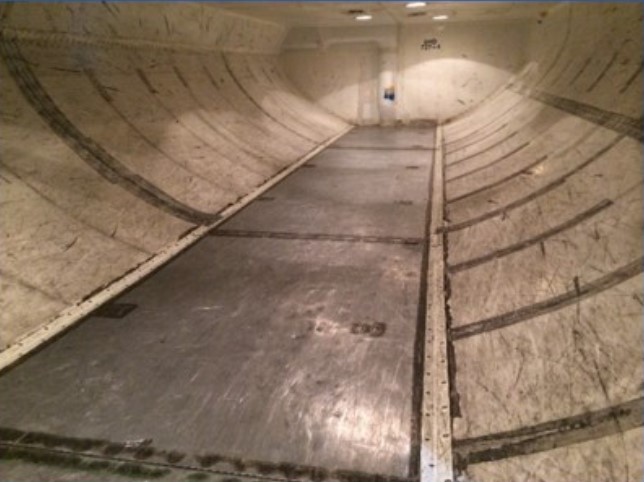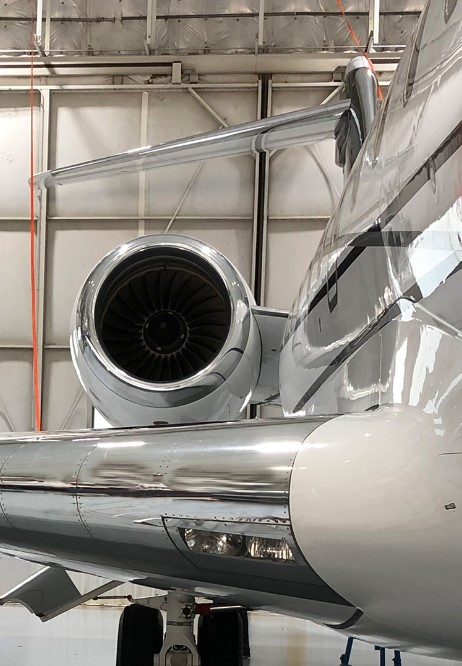Every aircraft mechanic and engineer knows some parts of their vehicles corrode more than others. Corrosion-prone areas on aircraft can be categorized as either external or internal. External corrosion, which occurs on the outer surface of the aircraft, is most often due to exposure to pollutants and moisture combined with a breakdown of the protective coating. Internal corrosion, though less common, can still be an expensive and risky problem if not considered during the design, manufacturing, and maintenance phases.
This blog post is here to give you a detailed summary of corrosion-prone areas of aircraft. They can be critical considerations when prioritizing maintenance and estimating operational timelines. With this knowledge, you will be able to effectively mitigate the consequences and expenses of corrosive attacks on your specific equipment.
1. External Areas
Proper aircraft care requires meticulous maintenance and inspection, particularly in specific external areas. This includes not only checking for visible damage but also searching for signs of moisture and pollution buildup that will lead to corrosion further down the line. Below are some areas to focus on:
- Exterior skin areas include surfaces on the wings, tail, and body of the airplane. Specifically, check key components on the body such as splicing, fittings, and joints. These areas are notorious for allowing contaminants and water to permeate the metal sheeting. Plus, protective treatments are more likely to wear down in those spots. If signs of oxidation are found, such as dulling of the metal, rust, or a bluish hue, you must remove the fasteners in the equipment and further examine the fixtures beneath the surface. Additionally, pay special attention to antenna attachment points anywhere dissimilar metals are matted and wheel wells.
- Exposed attachments on any external part have an increased risk of corrosive attack. As mentioned above, these areas need repeated treatment with primer, paint, and sealant because the stress frequently causes those treatments to break down over time. The most important attachments include hydraulic brackets in the wheel well, engine mount fittings, vertical fin fittings, hydraulic brackets in the wing, and horizontal stabilizers.
- Operating mechanisms and control cables must be greased to operate properly. As this grease slowly wears away, the risk of corrosion increases, and stress on the equipment is also exacerbated. These areas must always be checked during maintenance and grease should be routinely applied to decrease damage.
- Fretting-susceptible structures are areas that are more prone to fretting-type corrosion, an electrochemical process that is exacerbated by surface weathering. These areas are usually subject to high pressure, load weight, or inertial forces and include the wing spars, wing access panels, flap tracks, and wing lap splices. Again, this is resolved through strict maintenance and inspection.
- Vent openings and exhaust trails specifically dispose of fumes that can contain pollutants. On airplanes, these are the outflow valve, air conditioning packs, battery vent opening, engine exhaust trail, and auxiliary power unit exhaust trail. In these areas, corrosion is expedited due to vapor flux. It is easy for contaminants, soot, and moisture to linger if not cleaned and tested. Washing aircraft is your first line of defense for exterior corrosion.
2. Internal areas

Cargo Area
Corrosion-prone areas in internal aircraft equipment can be equally harmful and must be considered as well. The most common susceptible areas are detailed below.
- Interior skin surfaces refer to fittings, splices, and joints inside the airplane in which moisture and pollutants often get trapped. Though they’re unlikely to see the same exposure levels as external skin surfaces, corrosion in these areas can be more difficult to locate and resolve because they are typically hidden behind the aesthetic cabin fixtures. Also, be sure to note drain holes in equipment and lavatory components that can get blocked and quickly erode.
- Floor structure and door entries are known for leaks and spills. Additionally, all surfaces around the lavatory, battery compartments, and galley must be monitored consistently for any signs of unwanted moisture, and the source must be identified and dealt with swiftly.
- Seat tracks are an easy point of buildup for debris, as any passenger on a flight has probably noticed. Though less dangerous for the overall integrity of the aircraft, corrosion along these areas can still be expensive to fix if not consistently maintained.
- Integral fuel tanks are prone to pitting corrosion which presents as a dull, dusty surface. Eventually, small holes will form, particularly on the inside of the fuel tank within the coating. This is prevented through the reapplication of sealant treatment as needed.
Conclusion
The corrosion-prone areas on aircraft present unique challenges for inspection and corrosion-prevention treatment efforts. If left untreated, the increased susceptibility can lead to costly and time-consuming fixes. Understanding the areas which are more prone to corrosion allows you to consider these critical components during design, manufacturing, and maintenance. Now that you understand the corrosion-prone areas, you will be able to keep a closer eye on them, and properly select the Av-DEC product that best fits your needs. To learn more, contact an
Av-DEC representative
today.

